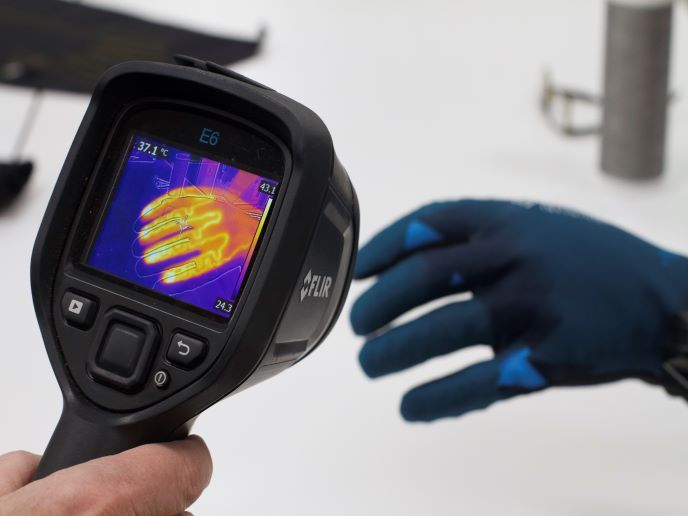Heated clothing offers consumers new options
Europeans have always dealt with cold weather, mainly via thick clothing. This is not always convenient, though, especially if frequently moving between indoors and outdoors. Heated apparel is not a new idea, but its execution has been problematic. Early forms of electrically heated clothing featured loops of heavy cables, much like an electric blanket. Such garments are heavy, bulky and uncomfortable. Furthermore, generations of batteries prior to the modern lithium type functioned poorly in cold conditions. Certain newer heating systems avoid some of these problems but are low quality and have a poor environmental footprint. Nevertheless, mainstream manufacturers are slowly becoming interested in electrically heated clothing for the leisure and sports markets. However, commercialising this will depend on the traditional problems and limitations of heated garments being solved.
New wearable heating platform
The EU-funded MAXHEAT project developed a completely new system for electrically heating clothes, called Inuheat Wearable Heating Platform(opens in new window). The new system is technically superior to earlier types. Special new heating yarns eliminate the bulky heating cables; these yarns can be woven, sewn or knitted into all types of textiles. Project researchers built and verified a yarn production system plus a data platform with app and started preparing for mass production. The system is environmentally friendly, robust and easy to incorporate into existing factory processes. The specially developed batteries can function down to -50 °C and have an extremely long service life. The advantage of electrically heated clothes is that they can be turned off. “We recommend that users of our system dress with thin layers, suitable for their maximum exercise load,” explains project coordinator Rickard Rosendahl, “instead of getting hot and sweaty if they wear too much. Later, when they take it easy, and the body temperature drops, our heating system starts up and ensures that the wearer doesn’t freeze.” The inbuilt motion sensor detects wearer movement and adjusts the heat automatically. This helps users maximise their sporting or work performance.
Manual control too
The powerpacks are easily operated with a smart button, giving garments a comfortable, controlled warmth. The power pack reads the garment’s software, and optimises its performance. Users can also control the garments using the supplied app, which provides extended functionality, including full control of release time. Users know to the minute how long the remaining charge will last. The app also provides a boost function, for quick heating. Garment manufacturers will use customised versions of the app for research and marketing purposes. Manufacturing is currently aimed at socks and gloves for the sports and outdoors sectors. This will be expanded to other types of garment, and production will be scaled up. “The coronavirus had a significant impact on our planning, and has delayed us in some respects,” says Rosendahl, “but we have worked hard to catch up. Production will now take longer as suppliers have reduced capacity, and it’s been tough for us to travel.” Nevertheless, during late 2020, the team released its first commercial products, and it expects to reach full manufacturing speed during early 2021. High volume deliveries will begin before autumn 2021.







